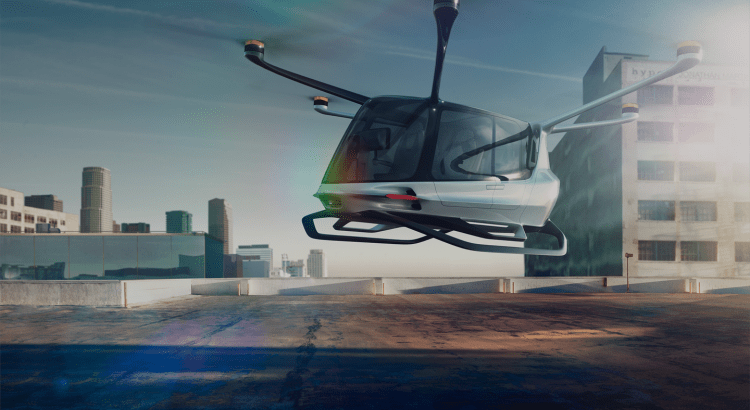EF Global VTOL
18 May 2023

On May 29, 2019, Hopkinton, Massachusetts-based Alaka’i Technologies revealed a “non-flying prototype” of its hydrogen-powered Skai electric vertical takeoff and landing (eVTOL) aircraft. The unveiling was held in Newbury Park, California, at the facilities of BMW-owned global creative consultancy Designworks, which was contracted for the vehicle design, with a focus on the passenger experience.
In parallel, a hydrogen-powered flying-prototype was undergoing high-power ground testing near Alaka’i’s headquarters in Massachusetts, and first flight was expected "within weeks." Alaka’i is working with the US Federal Aviation Administration on certification using exemptions to FAR Part 27 using the authority granted under 21.17(b) — “for special classes of aircraft” — and says it hopes for certification allowing commercial flights by the end of 2020.
Skai uses six electric motors with built-in redundancy, holds five people (a pilot and four passengers) or a maximum of 1,000 lb (454 kg). The company expects it to be able to fly at about 100 kt (190 km/h) and for over four hours, for about a 400 nm (740 km) range.
Founded in 2006, Alaka’i’s executive team has decades of aerospace development experience at NASA, Raytheon, Beech Aircraft, McDonnell Douglas, Hughes, etc.
VFS spoke with Alaka’i co-founder, president and chief technology officer Brian Morrison and board member Dr. Bruce Holmes. Morrison explained that he first started working on an eVTOL design in 2012, but it did not have much endurance. “I decided to see what I could do with hydrogen and fuel cells. I filed the first patents back in 2013, covering basically the architecture of the concept.”
“Hydrogen has a few hundred times the energy density of the best of lithium ion battery technology,” Holmes explained.

Alaka’i Technologies Skai hybrid-electric VTOL, USA.

Alaka’i Skai air taxi.

Alaka’i Technologies Skai medevac.

Alaka’i Technologies Skai cargo version.

Alaka'i Techologies Skai sideview and interior.

Alaka'i Techologies Skai interior.
About the vehicle that was unveiled, Morrison said, “It’s a 100% full-scale prototype. That one just was not intended to fly.”
Morrison holds several patents supporting the Skai and its hydrogen fuel cell systems. US patent 9764822B2, filed in early 2015, includes images of a six-armed vehicle with clear heritage to Skai. But, Morrison explained, “It took a long time to find investors — an investor that was willing to go along for the ride, as you’d say. We found that in the early part of 2018,” though he declined to identify who.
Alaka’i designed the systems architecture and controls for the hydrogen system, using an off-the-shelf system from Toronto-based Hydrogenics for the initial demonstrator. “Since then, we have been designing a custom higher-power, lower-weight version,” for the production version, Holmes explained.
Morrison wouldn’t reveal who Alaka’i has been working with for its aero-propulsion design, but said, “The modeling of it has been done by the group that does this work regularly for the military and for NASA and for Boeing. We are well into the design of our own custom rotor, which we’ll see in about another month-and-a-half or two months. What it is on the flying prototype is what was available off the shelf, so it’s not optimal. We think we can get even more lift and even quieter performance off of the custom implementation we’re doing now.”
The flying prototype, in contrast to the design that was unveiled, is currently testing three-bladed propellers. The concept uses differential propeller speed to affect attitude control. Morrison explained the flight profile: “We start with the vehicle at liftoff with about a 4° nose-up attitude by the way that the rotors are attached. At what we intend to be the max forward speed of 100 kt [185 km/h] we would be in about 4° nose-down attitude.”
Alaka’i Technologies says it can achieve a lower environmental impact and better performance from fuel cells because they can store more energy than batteries can in less space. With the incredible endurance that hydrogen provides, Alaka’i was able to design a relatively simple multicopter design (i.e. no tilting thrusters or lifting surfaces) without the need for cyclic or collective pitch control, etc. This allows much lower cost for production and a more straightforward approach to certification.